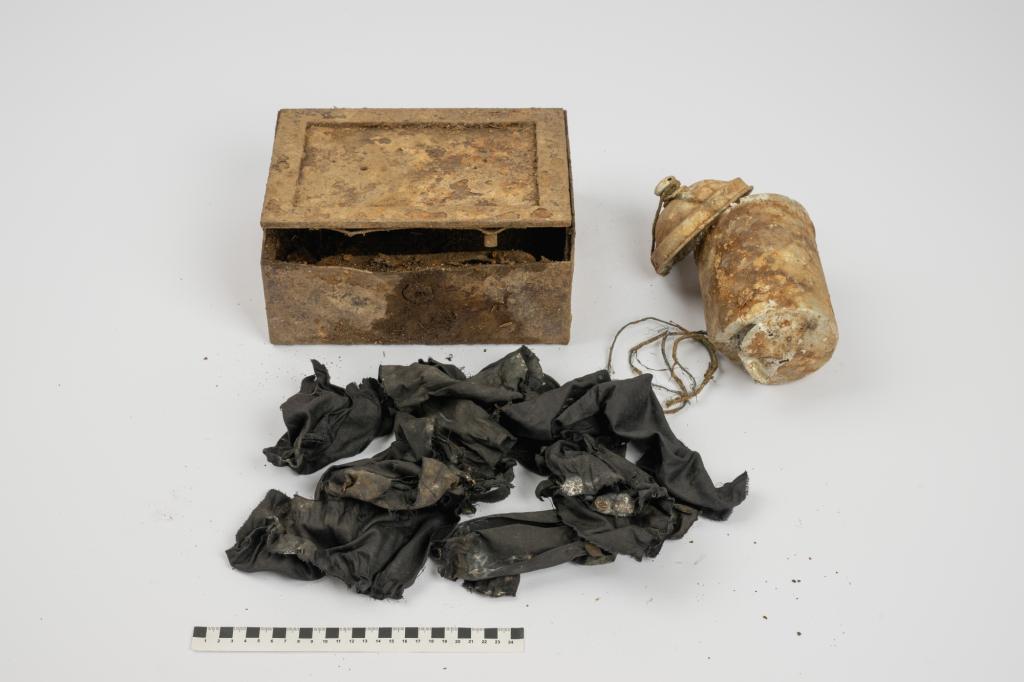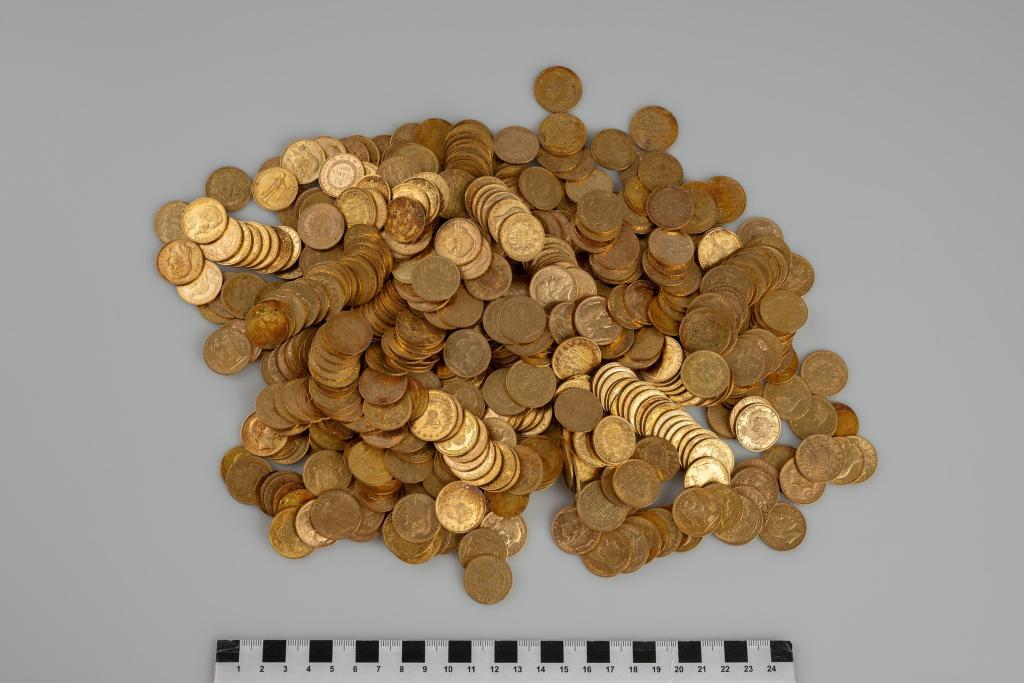Hikers shocked to discover gold coins from 1800s — and they’re worth a fortune: ‘My jaw dropped’
Stumbling upon loose change has never been so lucrative.
A pair of hikers in Czechia hit the jackpot after stumbling upon a cache of gold coins and jewels worth over $300,000 — which some historians speculate could’ve been purposefully hidden from the Nazis.
“When he [one of the hikers] opened it, my jaw dropped,” said Miroslav Novak, head of archaeology at the Museum of East Bohemia, where the treasure trove was assessed,
The incredible find was revealed in a recent .
The unnamed alpinists had been hiking the Czech Republic’s Podkrkonosí Mountains earlier this year when they happened across a small aluminum can and an iron box.
After peeping at the priceless contents, they brought it to Novak for evaluation. Inside the iron box was a horde of gold objects: sixteen snuff boxes, 10 bracelets, a wire bag, a comb, a chain and a powder compact.
Meanwhile, the can harbored 598 gold coins, which were “divided into 11 columns, each wrapped in black cloth,” per the archaeology buff.
These unearthed artifacts are unsurprisingly worth a pretty penny — millions of them.
“We will need to analyze the rest, but at the current price of precious metals, the value of the find can start at 7.5 million [Czech] Crowns ($340,000),” estimated Nowak.
However, he declared that the “historical value of the treasure” is priceless.
Coin expert Vojtěch Brádle noted that many of the money pieces were marked with dates ranging from 1808 to 1915. They originated in the Austro-Hungarian Empire when it was ruled by Franz Joseph I.
“I found out that these coins did not travel from the Vienna mint to us, but to the Balkans,” he said.“And there, after the collapse of the monarchy, in the then-Kingdom of Serbs, Croats and Slovenians, marks, so-called countermarks, were minted.”
He added, “The treasure was hidden in the ground for a maximum of slightly over a hundred years.
Interestingly, the coins hailed from many different places.
Some were traced back to Serbia in the 1920s and 30s — where they were often used in Balkan necklaces and headdresses — while others originated in France, Belgium, Turkey, Romania, Italy and Russia,
Brádle said they have “no idea” how all these diverse denominations ended up in Bohemia, but there have been a few theories.
Storing valuables underground had been a “common practice since prehistoric times,” Nowak noted.
“At first, religious movements were more common; later, it was property stored in uncertain times with the intention of returning later for it,” he said.
Some researchers believed that the subterranean stash was concealed following Naxi Germany’s annexation of the region with the Munich Agreement of 1938.
Following this accord, thousands of Czech or Jewish refugees notably retreated deeper into the country’s interior to escape anticipated persecution at the hands of Adolf Hitler.
Another theory is that the gold could’ve been buried by Nazis retreating from advancing Russian forces when they were ousted at the end of WWII.
“It is difficult to say whether this is the gold of a Czech who had to leave the occupied territory after the Nazi invasion of 1938 [or] the gold of a German who feared displacement after 1945,” said museum director Petr Grulich. “It could also be stolen goods from an antique shop, but we are not inclined to this option.”
Treasure provenance notwithstanding, conservationists at the Museum of East Bohemia hope to put the haul on display.
Meanwhile, the lucky hikers will get around 10% of the discovery’s total value, following Czech law.





